
Compact digital cameras with high storage capacities are so common today that it’s easy to forget that Star Trek: The Original Series was shot entirely with large analog cameras and lots of 35 mm film. And by lots of 35 mm film, we mean LOTS of 35mm film. So much so, in fact, that if you added the amount of film from the broadcast print of the first pilot to that from the 79 subsequent episodes, you’d have a spool of film that would stretch about 360,000 feet if unrolled. And when you consider that far more film than that was actually used to make the series – e.g., film for the negatives, the optical effects, the multiple unused camera angles, the outtakes, the work prints and so on — then the amount of film consumed was truly staggering.
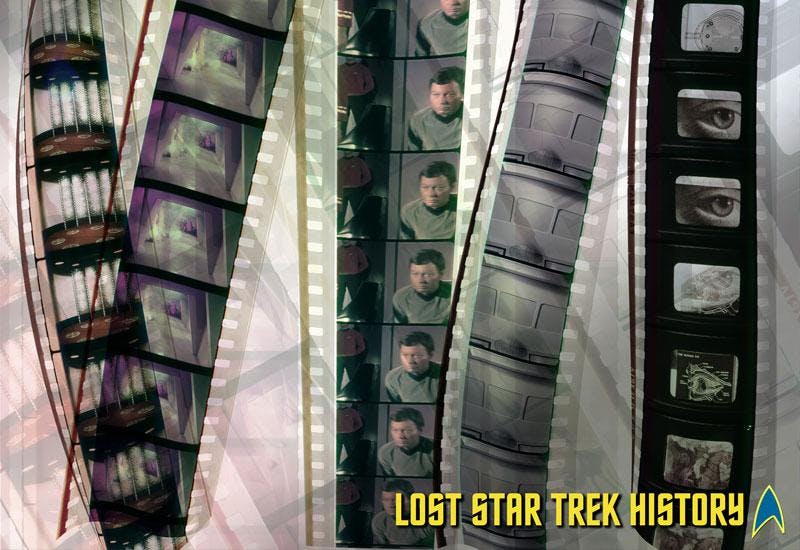
So, what’s become of all it?
Well, while TOS was being produced, most of the film was stored safely in studio vaults so that the production company could have quick access to it. But after the series ended, and this is depressing to write, only the negatives of the completed episodes were saved. The bulk of the remainder was discarded because no one thought, back then, that it was worth saving. TOS was, after all, just another canceled series.
Unfortunately, this means that most everything that was filmed that wasn’t in the aired episodes – things like the unused scenes, the outtakes, the behind-the scenes elements – was also discarded. (There are a couple of notable exceptions such as the film in the blooper reels and some miscellaneous strips and short rolls, but, by and large, the vast majority of the film is presumed gone).

So, is all this unseen TOS history lost?
Fortunately, the answer to that question is a qualified no, thanks in large part to the fans of TOS and some serendipitous distributed storage. You see, although the original unused motion picture film was destroyed, it’s still possible today to view still images of the missing film from surviving 50-year-old single frames. Let’s digress a bit and explain that in more detail.
Time Warp: Factor 1968
Back in the late 1960’s, the fans of TOS clamored for souvenirs of their favorite space show, so Gene Roddenberry obliged them. He – along with Bjo and John Trimble – established a company called Star Trek Enterprises (later renamed Lincoln Enterprises and then Roddenberry.com) that sold authentic Star Trek merchandise. Star Trek Enterprises had many different items in their catalogs, including scripts, stationary, posters and film clips. And it’s in this latter item – the film clips – where some of the missing film can be found.
Film clips, sometimes referred to today as “film cels,” are single frames of film that are cut from a roll of motion picture film. The ones from TOS that Lincoln Enterprises sold were cut predominantly from work prints (positive copies of the camera negatives) that were obtained directly from the studio. Those little frames were priceless gems because they were bits of authentic film that were actually handled by the production company. We fans usually mounted them in slide holders so that they could be projected onto walls or screens with projectors, and we were ecstatic because – in the era before Beta and VHS tapes, laser discs, DVDs, Blu-rays and streaming digital services – the film clips allowed parts of TOS to be viewed right in our homes at any time.
Lincoln Enterprises sold thousands and thousands of film clips worldwide and, fortunately for us historians, these work print “discards” were direct copies of all of the film that went before the cameras while TOS was being filmed. Thus, many film clips show things that never made it into the episodes, such as the bloopers, deleted scenes and behind the scenes elements. (If you bought any film clips from Lincoln Enterprises, then there’s a pretty good chance that you received some frames of this unused and unseen film. Based on our study of several million film clips, about 4% of an average random lot contained unseen production clips.)
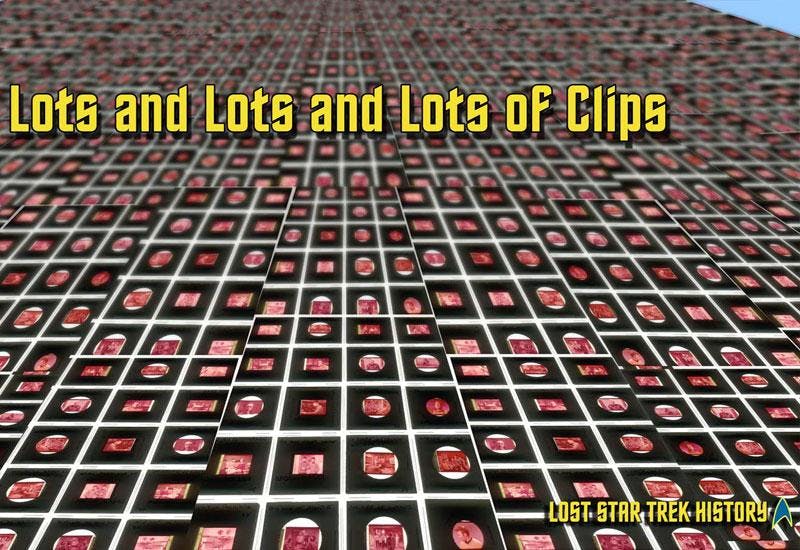
If you own any film clips, however, you may have noticed that their color has been changing over time.
Red Shift
No physical storage medium really lasts forever, and camera film is no exception. Since its inception, photographic film has used a variety of light-sensitive emulsions and support bases and many of them have deteriorated over time such as the cellulose nitrates and some of the dye-based cellulose acetates. Regrettably, this latter film is what TOS was shot on.
When TOS was being produced in the 1960’s, the positive prints for it were made on Eastman Kodak film stock that was chemically unstable. The chemicals that were used to generate the colors of magenta, cyan and yellow were prone to decomposition, which is resulting in the originally intended colors shifting. The magenta dye is the most stable, followed by the yellow and cyan dyes. In plain English, what this means is that as this film stock ages, it becomes “warm” and fades to a magenta/red color. And there is currently no inexpensive process for chemically reversing it. We estimate that in the next 50 years or so, the color in this film will be lost forever.
Ouch.
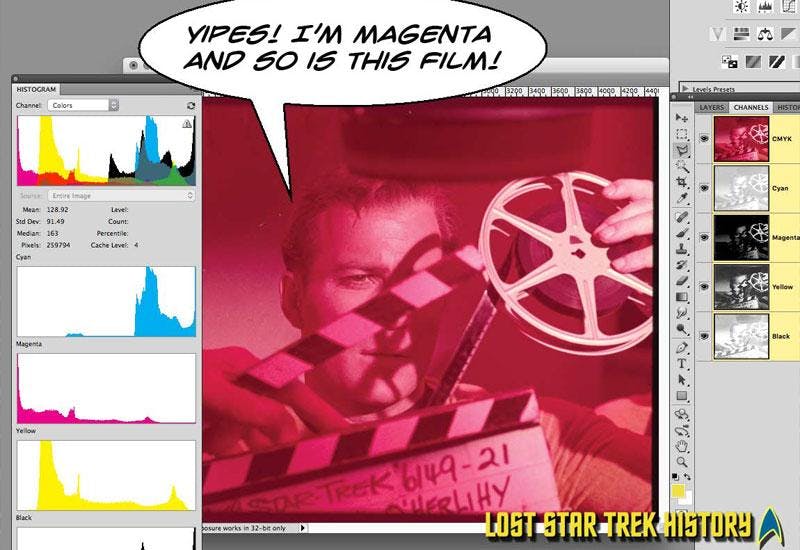
So, similarly as we’ve asked before, is all of the lost and now found film from TOS being lost forever?
In a word, no… at least not yet.
Cyan Shift
Using modern, professional film scanning equipment, a computer and appropriate software, it’s possible to digitally restore the faded film to its original color and pristine condition. The process is a bit laborious to do properly, especially when you consider that these bits of red plastic also have been accumulating dust and scratches for around 50 years. We think it’s worth it, though, because there’s no other way to view this lost TOS history. If you’re interested, you can see some examples of our restoration work at startrekhistory.com.
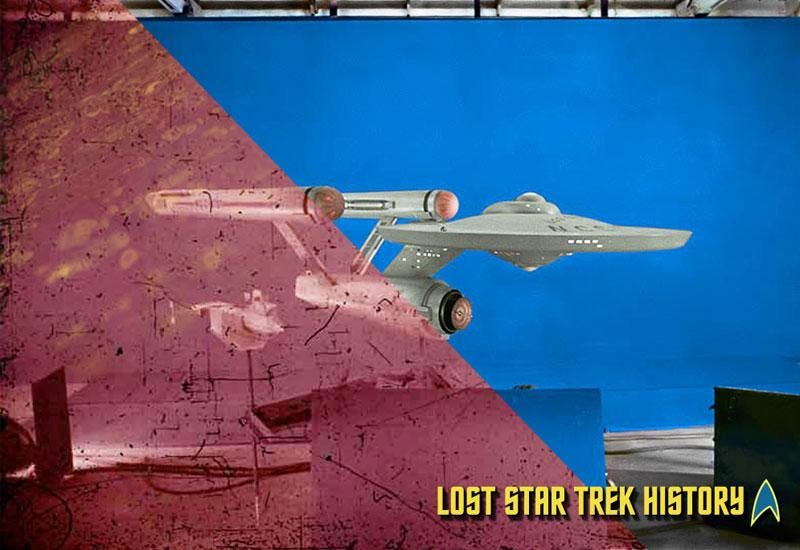
Over the coming months, we’ll be presenting at StarTrek.com some never-before-seen behind-the-scenes pictures, scenes from the episodes that were cut as they were being assembled and, of course, bloopers that occurred during filming. All of these images come courtesy of the Lincoln Enterprises film clips that we fans bought and distributively stored for the last 50 years.
To close this article, we’ll leave you with a still from a short scene that was deleted from Act Two of “Dagger of the Mind.” The trimmed material was supposed to have occurred after Helen Noel (played by Marianna Hill) reminded Kirk that they had met previously because he had dropped in to the science lab Christmas party. In case you’re wondering, the text that accompanies this scene comes directly from the shooting script of the episode.
Until next time...
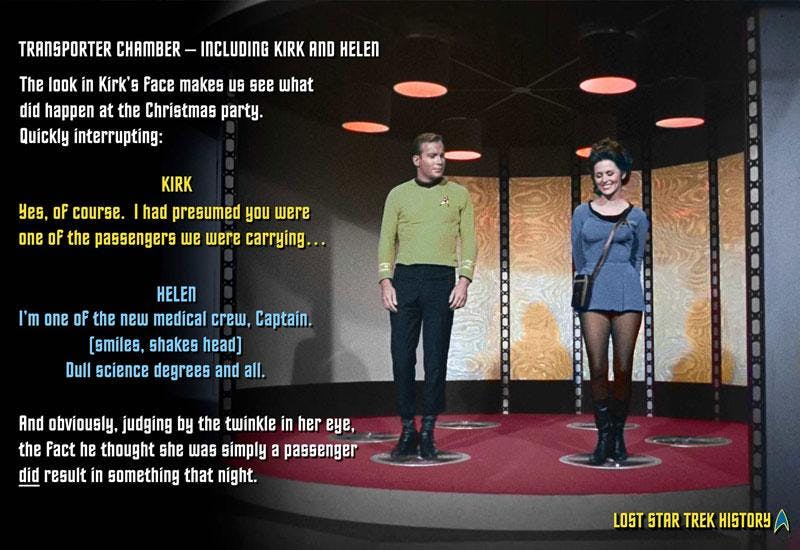
David Tilotta is a professor at North Carolina State University in Raleigh, NC and works in the areas of chemistry and sustainable materials technology. You can email David at david.tilotta@frontier.com. Curt McAloney is an accomplished graphic artist with extensive experience in multimedia, Internet and print design. He resides in a suburb of the Twin Cities in Minnesota, and can be contacted at curt@curtsmedia.com. Together, Curt and David work on startrekhistory.com. Their Star Trek work has appeared in the Star Trek Magazine and Star Trek: The Original Series 365 by Paula M. Block with Terry J. Erdmann.
